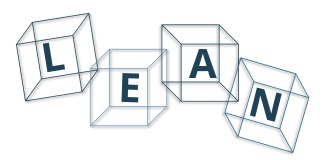Lean beyond manufacturing – Part 2
DNA of LEAN – Rules are much more important than tools…

Hello there!
Hope you’re doing well and safe!
After a couple of months of silence, I thought it’s a good time for us to discuss another part of the "Lean beyond manufacturing" article series. With this covid-19 situation, the whole world is focused on rules to decrease the spreading of virus and tools to connect virtually with each other, I then thought of discussing one of the most important aspects of lean; the DNA of lean or four rules of lean. If you’re not familiar with lean concepts, I believe that you have heard of some of the lean tools like PDCA, A3 thinking, Fishbone diagram, Pareto analysis, etc. However, the 4 rules what we’re going to discuss are much more important than those so-called lean tools.
Let’s see what’re those 4 rules or the DNA of LEAN:
1 All work shall be highly specified as to content, sequence, timing and outcome.
2 Every customer-supplier connection must be direct, and there must be an unambiguous yes-or-no way to send requests and receive responses.
3 The pathway for every product and service must be simple and direct.
4 Any improvements must be made in an accordance with the scientific method, under the guidance of a teacher or mentor, at the lowest possible level
in the organization.
If you closely go through each rule you will be able to understand that each of this rule provides the guideline for any product or service flow from design, the process to improvement and their interconnectivity among each other. You might be wondering or thinking that ‘Yes, it might be true for TOYOTA or any other manufacturing business... but we’re working in IT, healthcare, tourism, etc. so how it can apply to us?”
 I would say that it is a good question and I’ll ask you if you’ve read the previous article (Lean beyond manufacturing, part 1) on what is lean and what’s the objective of it. In simple words, Lean is all about identifying non-value adding activities and eliminating them through continuous improvement to achieve customer satisfaction by providing goods or services at the best quality, shortest lead-time at the lowest cost.
I would say that it is a good question and I’ll ask you if you’ve read the previous article (Lean beyond manufacturing, part 1) on what is lean and what’s the objective of it. In simple words, Lean is all about identifying non-value adding activities and eliminating them through continuous improvement to achieve customer satisfaction by providing goods or services at the best quality, shortest lead-time at the lowest cost.
Then, I’ll ask you again if you’re in the service business, wouldn’t that be your objective as well? Providing your services to the client with the best quality in the shortest period to the lowest cost to achieve high-level customer satisfaction? All right, I’ll keep you to answer that by yourself.
Now, let’s talk in detail about these rules and how the application of each of these is related to your business.
1 All work shall be highly specified as to content, sequence, timing and outcome
The first rule describes how a person does or performs his/her job or assigned task including the order of activities he/she needs to follow with a frequency, time and expected results or outcome with specific traits. If we can train any new joiner using the content of the first rule it will solve 80% of onboarding issues, daily operational problems and he/she will be able to perform his/her tasks accurately, identify any abnormalities of the outcome, and what to do and how to do if there’s any problem. So if you’ve structure every activity of the organization, employees know the standard, and they are able to highlight any deviations from the standard process, and they’ll engage in solving day-to-day problems for making their life easy.
If we elaborate this rule into the service industry, for the most part, there won’t be any tangible product at the end of the process. Also, people mainly work in information and process flow and not in a product flow. You might think it’s easy to structure and follow rule #1 if you’ve tangible workflow. Hence your workflow is intangible it’s not easy to implement. Yes, it’s not as easy as tangible workflow, but it’s not easy to identify problems or conduct any improvement activities if you’re not structuring your tasks. So how any new joiner get to know the flow of activities, expected outcome and characteristics if it’s not mentioned? Also, how are they able to maintain the consistency of the services if their tasks are not standardized? Think about how any of them could be able to highlight or solve the problems. I think it’s clear enough for you to understand the importance of implementation of rule # 1 at your organization.
2 Every customer-supplier connection must be direct, and there must be an unambiguous yes-or-no way to send requests and receive responses
In the first rule, we described how individual perform their tasks and activities.Whereas the second rule emphasizes how they interconnect and interact with each other. In nutshell, this expresses that there shouldn’t be any ambiguousness and uncertainty which means the connectivity among parties should be straightforward and standard. Though it may be an internal process, each process should have internal/external customer and internal/external supplier alongside the quantity, time and method of request.
This rule enables the supplier-customer relationship with clear responsibility of input and output product or service within the timeframe. Usually, lean organizations practice this connectivity using Kanban systems to interconnect with each customer and supplier. Here customer means the person who is requesting the information or output and the supplier is the one who supplies the input or data. This can increase productivity and effectiveness, especially in service-related organizations.
3 The pathway for every product and service must be simple and direct
Then the third rule is about having a specified and simplified process flow. It doesn’t matter whether it’s service or product-oriented workflow, it should be simple enough to understand by the key stakeholders and specific enough to perform the task/ activity and meet the expected outcome with certain characteristics. This simplified and specified path should not change unless there’s any additional design requirement or redesign request. By implementing this rule, you can reduce the unforeseen issues and errors as a service provider, and even though there’s some error happened it’ll be easy for you to trace back and find out the origin of the problem or issue.
4 Any improvements must be made in an accordance with the scientific method, under the guidance of a teacher or mentor, at the lowest possible level
 The first three rules are all about maintaining the process, and the final rule is about improving the process. For any improvement, it’s essential to know how to change and who is the point of contact for any particular change. According to the above-mentioned fourth rule; any improvement should follow a scientific method under the direction of a mentor. This rule applies to any task level improvement or process level improvement. For any improvement first step is identifying the problem or the gap. In the service industry, what kind of gaps or problems you face in day-to-day operations or high-level processes? You might be able to comment in this article comment section and let us know what kind of problems you’re facing on a day-to-day basis.
The first three rules are all about maintaining the process, and the final rule is about improving the process. For any improvement, it’s essential to know how to change and who is the point of contact for any particular change. According to the above-mentioned fourth rule; any improvement should follow a scientific method under the direction of a mentor. This rule applies to any task level improvement or process level improvement. For any improvement first step is identifying the problem or the gap. In the service industry, what kind of gaps or problems you face in day-to-day operations or high-level processes? You might be able to comment in this article comment section and let us know what kind of problems you’re facing on a day-to-day basis.
For example, you want to reduce the time taken to deliver a client request or you might want to reduce the number of data errors or defect rate of information that happened at the middle of the process or reduce the client complaints against your hotel room or valet service… So what can you do for this kind of repetitive issue or problem and how to improve the situation using this rule # 4. The first step is to identify and clarify the problem and then follow the scientific approach like; identifying the causes or point of origin behind the issue (man, machine, method, material, information, environment), analyze each cause and use 5 why to identify the root cause and create countermeasures using hypotheses and priorities the countermeasures, create an action plan for pilot and monitor the progress, results and standardize if positive results continue and if there’s no change need to do analysis and next steps again under the supervision of a problem-solving mentor.
I expect that you have got a certain level of understanding about the DNA of lean/ 4 rules of lean. This article is quite longer than I expected since I had to elaborate in little detail for you to understand what the rules are, their purposes and how they can effectively be used by the service industry. If you still think these 4 rules do not apply to the service industry, I invite you to watch a Netflix show called “AMAZING HOTELS – Life beyond the lobby” and particularly the episode of Marina Bay Sands, Singapore. Service industry and organizations may be having complex or complicated workflow, though you can make it simple and specific just by applying this DNA of lean.
And don’t forget to mention your thoughts and questions about this article, I’ll assist you to answer to the best of my abilities.
Be Safe!
This article was written by Anupama Priyadarshani. Thank you Anupama!
Reference: Spear, Steven & Bowen, H.Kent. (1999). Decoding the DNA of the Toyota Production System. Harvard Business Review. 77.
